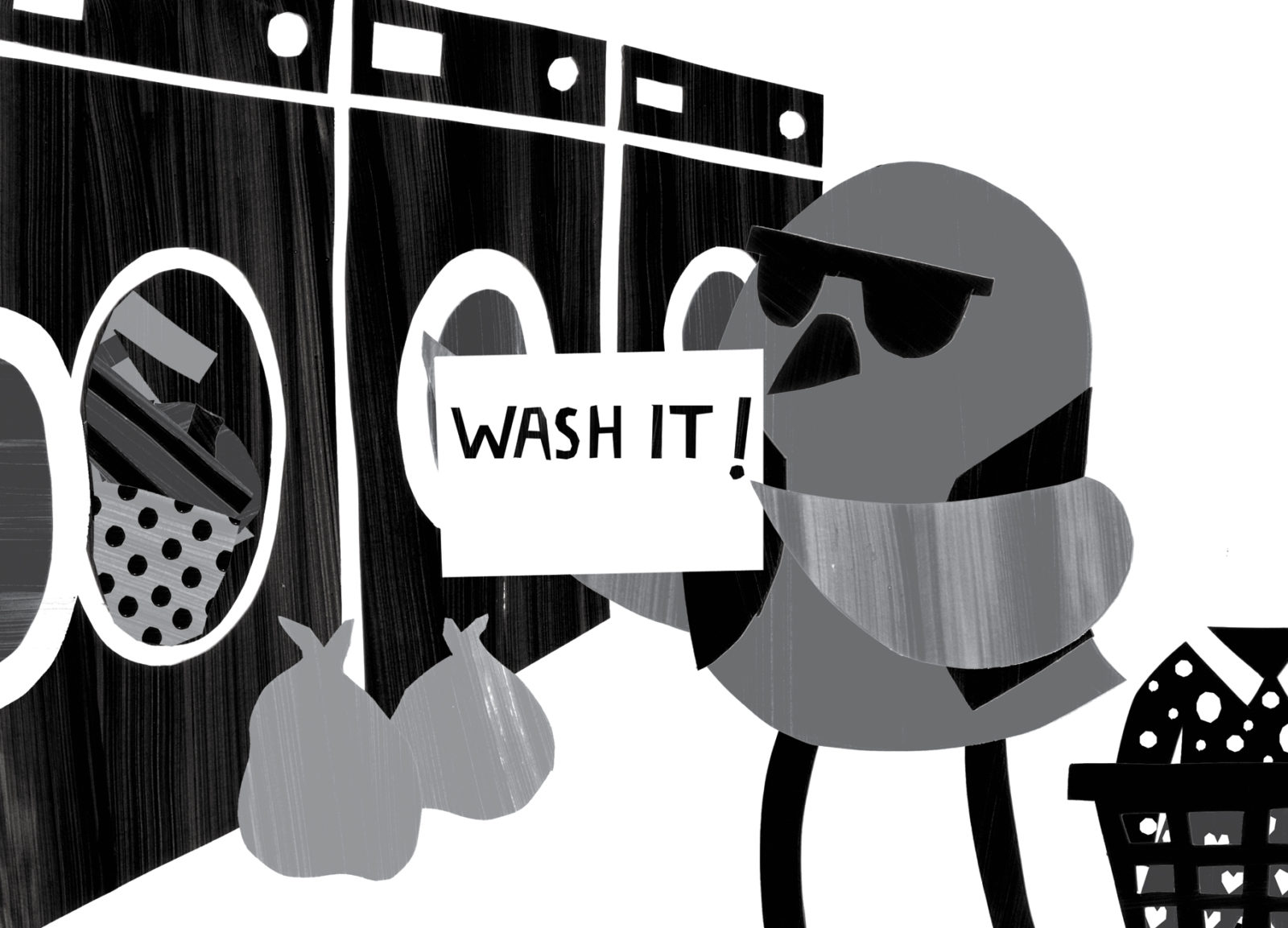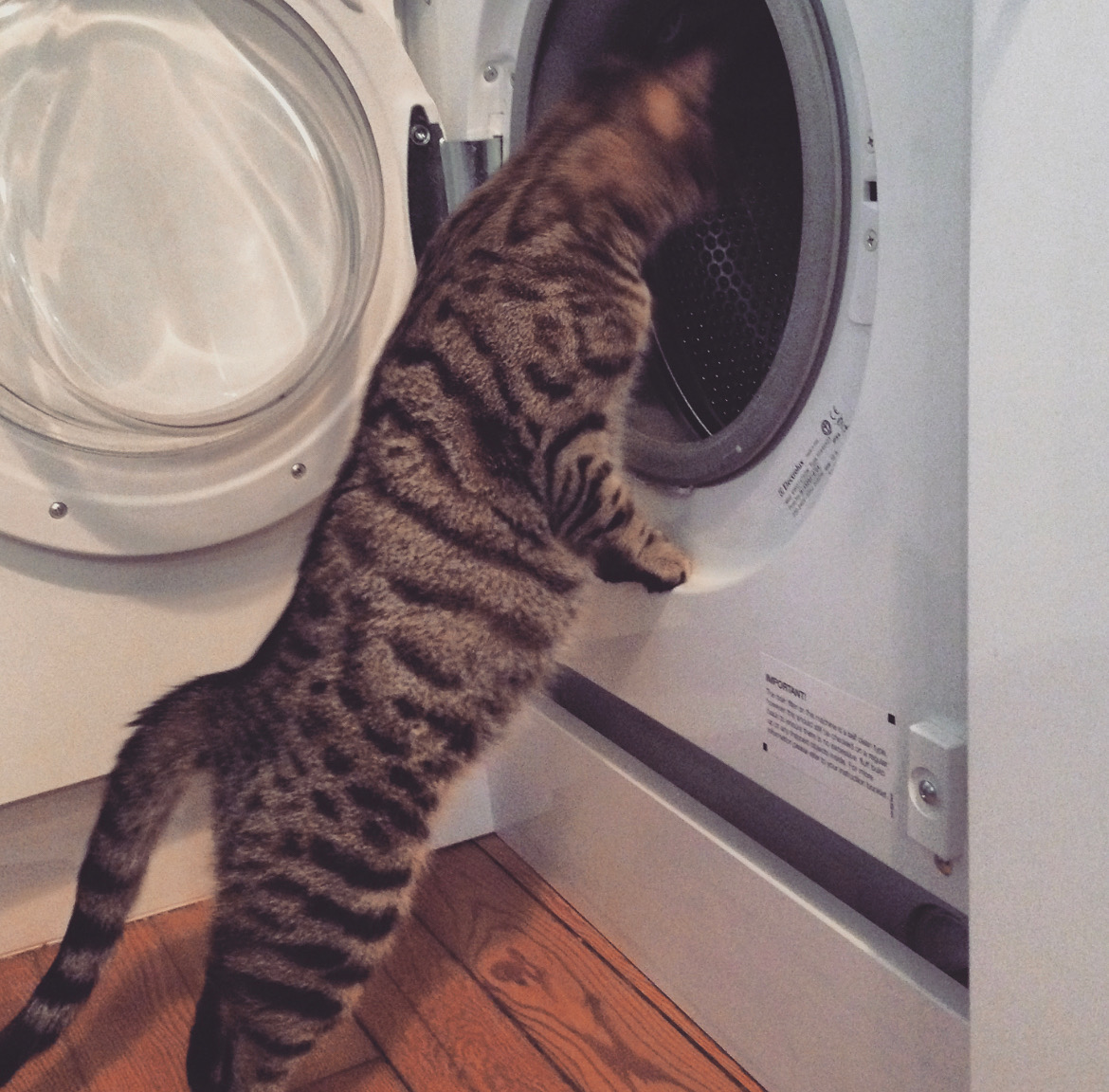Professional laundry programs differ from a typical domestic cycle. In a domestic wash, there is a main wash and a water rinse, with a pre-rinse optional and a spin at the end. Domestic washes cater to the types of product available to the domestic market, which are typically fully-built powders and liquids that are designed to do basically everything in a single stage. These kinds of product can be quite costly for the range of problems they actually solve, so that while on-premises laundries that are funded indirectly (such as B&Bs) may be able to do this for their linens, this approach isn’t feasible for other professionals working at scale.
On a larger professional scale, the launderer typically settles somewhere between two extremes:
-
Completely bespoke washes for each type of article being washed
-
A general do-it-all wash that is almost the same for most articles laundered
This depends on the launderer and the customers they typically take. For example, a launderer who largely deals only with restaurant linen may have a different approach to one who deals primarily with towels and fluffy gowns.
This is one of our longer posts. There’s a progress bar around the halfway mark.
Table of Contents
Four Stages
For laundering in washer extractors there are four stages to a wash cycle: emulsifier, main wash, bleach and final rinse, with the option to pre-spot or soak items before they enter the cycle, plus a spin and dry afterwards.
Let’s go through them, one by one.
Emulsifier
Greases are everywhere and, other than “unlaunderable” marks, are probably one of the worst types of stain for their persistence and the feeling of uncleanliness they leave. Even when it appears that greases are gone, they can remain invisibly on the fibre, spreading and even solidifying like the build-up on a baking tray. The sooner greases are removed, the better the result.
Greases act as a barrier to other chemicals used in the wash. For instance, they can prevent the action of bleaches. Emulsifier is therefore the first step in a wash program because it uses specialised surfactants to help strip greases from fibre and keeps them suspended in water long enough to flush them away. No emulsifier works perfectly due to how strongly fibres retain grease, but the rest of the wash is improved by first stripping heavy deposits of grease, which would quickly overwhelm the limited emulsifying ability of the main wash.
Emulsifiers for food greases work well in tandem with alkali boosters because the high alkalinity partially saponifies the fats, releasing them as soaps into the wash. Emulsifiers are also useful for helping to shift “human” greases, like sweat and collar grime.
Main Wash
The main wash detergent has some limited emulsifying action of its own, but that emulsifier content isn’t really for stripping grease. It is mainly composed of surfactants and other helper agents that let water penetrate stains, break up any solid stain materials and shift loose greases and particulate matter like soil. The main wash is therefore after the emulsifier, because it targets what the emulsifier alone will not and the emulsifier “protects” the main wash detergent from greases that will make it perform less well.
Main wash detergents are effective when the stain they’re working on can be removed by the chemicals involved and the fairly gentle and non-specific mechanical action that the wash provides. At this point, any optical brightener in the wash detergent is applied to reduce or eliminate the impact of fibre yellowing.

Bleach
We’re not really interested so much in the choice of bleach here, rather we need to know why it comes so late in the wash cycle. After all, if bleaches remove colour and are famed for killing bacteria, surely it’s better to just bleach the lot right at the start? Well, no, actually. It isn’t.
While emulsifiers and main wash detergent blends can shift large amounts of soiling materials on contact with their surfaces, bleaches only work to destain the parts that they can touch on a molecular level. They have surprisingly little penetrating power. Bleaches work best when they’re only acting on some residual amount of material left directly on the fabric surface, with nothing to hinder them. That way they completely overpower the stain on contact or soon after, acting quickly and efficiently. If a bleach has to penetrate some barrier first, it’ll be slower and it might react with that barrier, requiring more bleach. As bleaches are water-based, they will be repelled by greasy barriers and may not ever really get through them in some cases.
Even if an emulsifier doesn’t shift all the grease perfectly, if it shifts enough of it to mostly expose the fibres, a bleach can eventually do its work. Speaking of greases, cooking grease that is treated with a chlorine bleach can start to polymerise. This is very bad news as this type of greasy residue has a lot in common with the greasy layer on cooking trays. It is extremely difficult to remove, lends a greasy smell that doesn’t go away and has an unclean feel to it. In effect, bleach could set a greasy stain in and reduce the lifetime of the average chef apron or towel, for example. Using bleach last should reduce the impact that this has.
Final Rinse
Final rinse agents in the wash cycle mainly include sanitisers and softeners, but could also include bleach scrubbers, sours and starches if they are designed to be used in a rinse. Much like bleach, final rinse agents work best on completely clean fibres because they act on them essentially on a molecular level, so their performance can be affected by whatever isn’t cleaned off by the other stages of the wash cycle.
Simple Changes, Simple Savings
In general, the main wash stage is the only non-negotiable part of any cycle. Otherwise, the others may not be necessary, depending on the needs of the articles to be washed.
- The emulsifier step may not be necessary for articles that don’t have much grease on them at all. A fully-built main wash detergent is designed to handle small amounts of grease, so for nil-grease loads it’s overkill to have an emulsifier step.
- It’s a similar story for bleach. If the load doesn’t have any stains that would be eliminated by bleach, then a bleach is also a waste unless it’s needed for other purposes like killing bacteria.
- For stains that are known problem stains like blood and ballpoint pen, adding in a pre-spotting step may reduce the staining down to a level that the main wash would struggle to reach on its own. This may then also reduce the amount of bleach that is needed or, if it works especially well, eliminate the need for bleach.
- The emulsifier can be loaded into the main wash cycle with the main wash detergent, skipping the emulsifier step to save time, energy and water. This isn’t the most ideal way to do it, but it does work well for many of our customers a lot of the time. As we’ll find out soon, however, the main wash does have to meet the temperature requirements of the emulsifier.
Temperature
The temperature of any wash phase is dependent on the chemicals used, the types of stain it addresses and the material being washed. There is also the rate of heating and cooling to consider.
When transitioning between cool and hot parts of the cycle, the transition can’t be sudden. If the temperature ramps up too quickly going into emulsification or the main wash, protein stains can set in. If the temperature declines too quickly when leaving any phase, the fibres will undergo heat shock, which can lead to shrinkage and warping. Look closely at your machine’s settings to determine how quickly you want to transition between temperatures.
We generally recommend choosing chemistry that all works at a cooler temperature due to the environmental, cost and time savings.
Spotters & Steam
Pre-spotting on a spotting table happens at room temperature but may require the use of steam. The function of steam is not to force the steam through the fibres but to gently heat the chemicals that have been applied while they’re inside the fibres, to help them act more quickly without diluting them. This shouldn’t cause any tremendous spike in temperature, rather it should steadily get the fabric reasonably warm or at most barely hot to the touch.

Emulsifier Cloud Point
Emulsifiers can work across a wide range of temperatures but the manufacturer may state something called the cloud point. Non-ionic surfactants like emulsifiers have a cloud point temperature, above which the emulsifier starts to behave more like an oil itself by separating out from the wash solution, turning it cloudy or milky. At or above this is actually the best temperature for use of an emulsifier, because its micro-droplets begin to merge with the oily greasy residues on the fibres and this mixing helps to lift them away as more micro-droplets. The lower the cloud point the better the emulsifier performs at a lower temperature.
You can test whether a sample of emulsifier is appropriate for your process by adding a capful to a bucket of water at wash temperature – if it stays clear it’s below the cloud point and won’t work so well, but if it goes milky it’s warm enough.
Greases that aren’t liquid at the wash temperature are typically very difficult to remove, even with emulsifier. This is because the mechanism of their removal assumes that they can flow well enough to form droplets and come away from a surface. Ballpoint pen for example contains greases and resins that don’t melt, even in boiling water. This is partly what makes them so persistent.
Main Wash Performance
Main wash detergents have a stated range of temperatures at which they work best. Though non-bio formulations historically worked best at higher temperatures, modern ones often perform at lower temperatures with little if any benefit to higher temperatures.
Biological formulations however contain enzymes that work best at a low temperature range (not cold but not exceeding 40 °C) and above this range the enzymes deactivate permanently, leaving their non-bio components to do all the work. This wastes the enzyme’s function entirely and it may not be compensated by extra heat.
Bleach Activity
Bleaches vary in the range of temperatures they should use. Hydrogen peroxide or percarbonate on its own is ineffective for stain removal below 60 °C, but with an added activator it can get results even at room temperature. Other oxygen bleaches like DD Cool may work at room temperature as-supplied, though do check manufacturer’s instructions. If unsure, you can test whether your wash water temperature is appropriate by adding instant coffee to it in a bucket and seeing whether a capful of your chosen bleach makes it more yellow or straw-coloured.
Cool Final Rinse
Final rinse agents typically don’t call for high temperatures and are formulated for a cool rinse. Take care bringing the temperature back down for the final rinse, to avoid shocking the fibres.
Duration
The overall time taken for the cycle depends on heating and cooling rates, in addition to the time taken for filling, agitation, wash action, drainage and spin. It’s generally not beneficial time-wise to use elevated temperatures unless the chemistry calls for it. Filling from a boiler or other central hot water source instead of a cold-fill helps reduce the time taken, but may not be good for certain fibres or stains.
In the end, the amount of time for each stage of the cycle is up to you, though it is typical for a main wash agitation to last 10 to 15 minutes and the duration of each stage depends on the needs of that wash. Greasy towels may focus longer on the emulsification and less on the main wash, and certain washes may exclude entire stages if they aren’t needed. If the time it takes for a certain phase is a bit long for your time budget, consider changing the chemistry.
If you need help or advice with your process, call us 01933 681616 or check the contact page.

About This Series
Our laundry science series is here to show the what and why of professional laundry, to empower our customers and the public. These wash design blogs are a part of that and are meant to help our customers make good decisions about their process and chemistry. Watch this space for more of the same!
